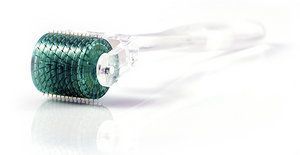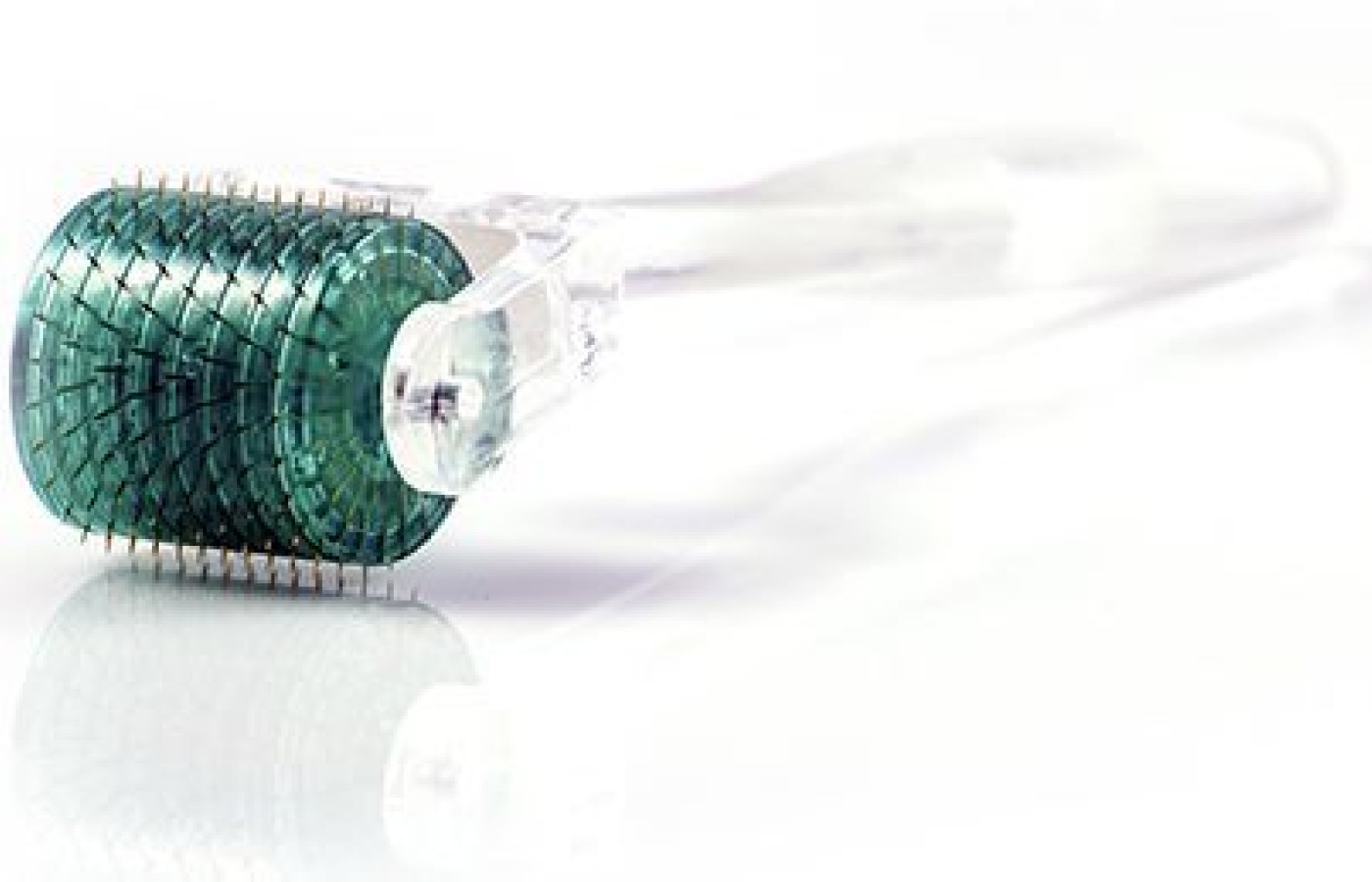Whether you accept it, avoid it or live somewhere in between, insurance coverage has become a defining issue for our profession. Patients increasingly expect to use their benefits, practitioners want to be compensated fairly for their time and expertise, and the system itself remains – at best – fragmented. The encouraging news is that coverage has expanded in meaningful ways. The challenging news is that reimbursement, across the board, remains inadequate.
Scar Reduction With Acupuncture & Microneedling (Part 1)
Applied correctly, modern skin needling techniques can form part of a holistic treatment and incorporate the principles of Chinese medicine. Let's discuss the effective treatment of reducing scars by combining acupuncture and microneedling, including a discussion of the different needle penetration depths compared to acupuncture.
Acupuncture has a long and well-documented history in the treatment of scars, since they often cross acupuncture meridians, which can lead to illness and also for cosmetic reasons. In addition to cosmetic scars, the increasing prevalence of surgery has produced a wide range of scars, particularly for women on the lower abdomen as a result of gynaecological surgery and childbirth techniques. Like the face, this area is very abundant in important acupuncture channels, which if interrupted, can lead to pain and other pathological changes.
Techniques like circling the dragon have been in use for centuries and testify to the long-standing use of acupuncture to reduce scarring. In the modern world, both doctors and the beauty industry also employ needling in their clinics to reduce scars. It is beneficial to share knowledge between these industries in order to provide the best possible treatment for our clients.
Microneedling

Microneedling involves the use of small, hand-held rollers. Each roller contains an average of 192 microneedles – very short needles. The rollers are rolled across the skin, penetrating the skin relatively superficially. This shallow penetration is similar to the penetration patterns produced by the plum blossom needle or 7-star needle.
The advantage of microneedling over the plum blossom needle is the relative speed, efficiency and comfort with which large areas of skin can be covered. By rolling across an area of skin 15 times, you can produce 215 punctures per square centimeter. As well as being fast to use, the rolling action also inserts the microneedles very smoothly, making the treatment more comfortable for the patient, which is important when penetrating the skin so frequently.
How Does It Work?
Anyone who has read about microneedling may be aware that it is well-known for its ability to induce collagen in the skin. This collagen is produced naturally by the body as part of the wound-healing cascade. Skin punch biopsies have shown that a single treatment with microneedling can produce an average of 206 percent increase of collagen in the skin, with the best examples showing a 1,000 percent increase.1
The new layer of collagen is produced very superficially along the border between the epidermis and the dermis. Microneedles as short as 0.5 mm have been shown to be able to reach this level for effective collagen induction, and most practitioners now employ microneedles between 0.5 mm and 1.5 mm in length.
What is less well-documented about microneedling is its ability to break down old and misaligned collagen in the skin. Biologically scars are simply bunches of collagen that are misaligned. Under intense magnification, the collagen fibers in scars actually run parallel, as opposed to the web-like matrix of healthy skin.
When microneedles penetrate the skin, they cause trauma, which in turn activates the wound-healing cascade. Part of this cascade is to stimulate a group of enzymes called collectively collegenease.2 The sole purpose of these enzymes is to break down old collagen.
A simple example helps to demonstrate. If someone cuts themselves, along the border of the cut the collagen is damaged. These enzymes break down this damaged area so the wound can knit back together smoothly. These enzymes once produced by microneedling proceed to break down the scar tissue in the area.
The wound-healing cascade is activated by all forms of skin needling. Microneedling is particularly effective simply because it can provide such an intense concentration of punctures at the correct depth. By doing so, it can help break down the scar tissue in the area while simultaneously creating a complete new smooth collagen matrix to replace the scarred tissue.
Research has shown that microneedling can benefit scars by improving their appearance by one or two grades.3 Patients have rated the improvement of their burn scars following microneedling treatments at an average of 80 percent.4
It is worth noting that in addition to its actions on collagen, microneedling can dramatically increase the absorption of any products applied to the skin. This increase in absorption can be up to 10,000 times under certain circumstances.5 If appropriate serums are applied, they can benefit the reduction of scars. Care must be taken to be sure all substances placed on the skin are safe to cross into the bloodstream, as the small conduits created by the microneedles facilitate this process.
How Does Acupuncture Benefit scars?
It is important to understand the different mechanisms through which acupuncture benefits scars in order to understand why the two treatments work well together. Traditionally as practitioners we have been taught that acupuncture increases qi and blood circulation in the area and breaks up stagnation. This leads to the development of techniques like circling the dragon in which acupuncture needles are placed just outside the border of the scar with the needles inserted underneath and towards the center of the scar.
The same techniques are applied to more linear scars, with these techniques sometimes being referred to as threading. Using acupuncture in this way has shown a 93.9 percent effectivity rate in early studies on hypertrophic (raised) scars.6
To understand the scientific mechanism by which this works, we need to look beyond acupuncture research. In 1995, medical researchers experimented using a tri-beveled syringe.7 The syringe was inserted below scars and then manipulated, with the aim of breaking the scar away from the healthy tissue below.
With further skin examination it was found that this technique could increase healthy collagen in the area of the scar and also actually raise depressed (hypotrophic) scars, improving their appearance. This treatment is now widely used by doctors to treat acne scarring for which further research has shown it is very effective.8
Patients who have had this treatment report hearing a popping sound as the scars release. This reaction may be partly psychological, but it demonstrates how instant the results can be when this techniques is performed correctly.
The research listed above shows that by using either acupuncture or techniques easily replicable with acupuncture, both raised and depressed scars can be effectively treated. The mechanism appears to be a combination of collagen induction at a deeper level than microneedling and a separation of the scar tissue from the healthy tissue below it.
The Advantages of Combining The Treatments
By combining acupuncture and microneedling, we can effectively treat scars at two different levels simultaneously. Both techniques are scientifically shown to be effective and used together can complement each other and improve both the results and the speed with which they can be achieved.
The holistic principles of acupuncture can be applied to microneedling to improve the techniques and ensure the treatment is used in conjunction with appropriate diagnosis and treatments to ensure better results.
Author's Note: Part two of this article will discuss protocols and contraindications.
References
- Schwartz L. Abstract reflections about Collagen induction therapy (CIT): a hypothesis for the mechanism of action of collagen induction therapy (CIT) using micro-needles. Horst Liebl, Jan 2007.
- Fernandes D. Minimally invasive percutaneous collagen induction. Oral Maxillofacial Surgery Clinics of North America; 2005;17:51-63.
- Majid I. Micro needling therapy in atrophic facial scars: an objective assessment. Journal of Cutaneous Aesthetic Surgery, Jan–Jun 2009;2(1):26–30.
- Aust MC, Knobloch K, Reimers K, et al. Percutaneous collagen induction therapy: an alternative treatment for burn scars. Burns, Sep 2010;36(6):836-43.
- Henry S, McAllister DV, Allen MG, et al. Microfabricated microneedles: a novel approach to transdermal drug delivery. Journal of Pharmaceutical Sciences, Aug 1998;87(8):922-925.
- Song H, Mu J, Wang J. Clinical study on treatment of hypertrophic scar by acupuncture. Journal of Acupuncture and Tuina Science, Jun 2011;9(3):159-161.
- Orentreich DS, Orentreich N. Subcutaneous incisionless (subcision) surgery for the correction of depressed scars and wrinkles. Dermatologic Surgery, Jun 1995;21(6):543-549.
- Chandrashekar BS, Nandini AS. Acne scar subcision. Journal of Cutaneous Aesthetic Surgery, May–Aug 2010;3(2):125–126.



